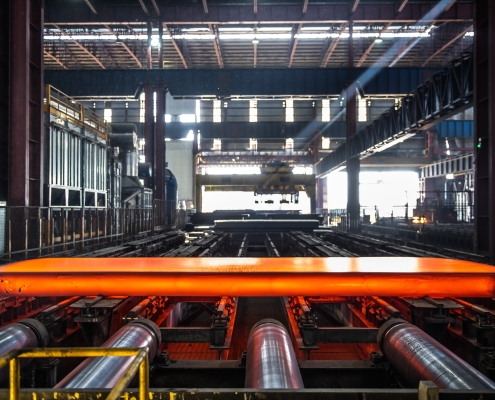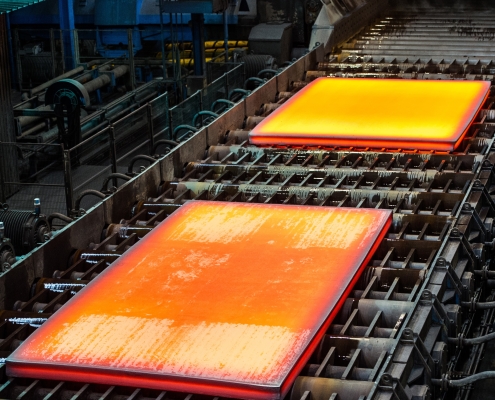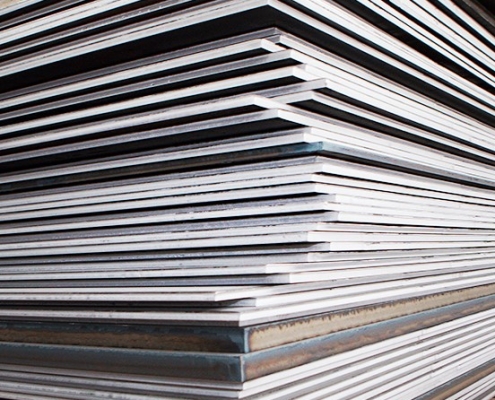Future Energy Steel offers a comprehensive range of high-quality tailored Steel Plate for Bridges construction, meticulously engineered to meet stringent industry standards such as ASTM A709 and EN 10025. Our selection includes various grades optimized for strength, durability, and weldability, ensuring superior performance in diverse bridge engineering projects. Key features include high tensile strength, excellent weathering resistance, and precise dimensional accuracy, essential for bridges’ structural integrity and safety. We provide comprehensive services, including customized cutting, testing, and efficient logistics solutions, supported by our unwavering commitment to quality assurance. Whether for highway bridges, railway bridges, or pedestrian walkways, Future Energy Steel’s bridge steel plates guarantee reliability and longevity, making us a trusted partner in infrastructure development worldwide. For more details, please contact us at [email protected].
FAQs
What Are Steel Plates for Bridges?
Steel plates for bridges are specialized structural components designed to support the weight of traffic and withstand environmental conditions such as weathering and corrosion. These plates are crucial in bridge construction due to their strength, durability, and ease of fabrication. Key features of steel plates for bridges include:
High Strength: Steel plates used in bridges are engineered to provide high tensile strength and toughness, ensuring structural integrity and load-bearing capacity.
Weathering Resistance: Many bridge steel plates, such as ASTM A588 and ASTM A709 Grade 50W, are designed to have weathering properties. When exposed to weathering elements, they form a protective rust-like layer. This reduces the need for maintenance painting and extends the service life of the bridge.
Weldability: Bridge steel plates must be well-welded to facilitate fabrication and construction processes, including welding different components and structural elements.
Dimensional Accuracy: Steel plates for bridges are manufactured to precise dimensional tolerances to ensure proper fit and alignment during assembly and construction.
Corrosion Resistance: Depending on the environment and exposure conditions, bridge steel plates may include corrosion-resistant coatings or alloys to withstand corrosive elements such as saltwater (for coastal bridges) or chemicals (for bridges in industrial areas).
Customized Specifications: Bridge steel plates come in various grades and thicknesses tailored to meet specific design requirements and loading conditions dictated by bridge engineers and regulatory standards.
Steel plates for bridges are used to construct highway bridges, railway bridges, pedestrian bridges, and other structures that span obstacles such as rivers, valleys, and highways. They play a critical role in ensuring transportation infrastructure’s safety, durability, and efficiency, contributing to communities’ economic and social development.
How Many Types of Steel Plates for Bridges?
Steel plates for bridges can be categorized into several types based on their specific properties and intended use in bridge construction. Here are the main types of steel plates used for bridges:
Carbon Steel Plates: Carbon steel plates are the most common type of steel used in bridge construction due to their affordability and availability. They offer good strength and toughness that are suitable for various bridge applications.
Weathering Steel Plates: Weathering steel, also called corten steel, develops a stable rust-like appearance when exposed to weathering elements over time. This rust-like layer acts as a protective coating, reducing the need for maintenance and painting. Weathering steel plates (e.g., ASTM A588 and ASTM A709 Grade 50W) are commonly used in bridge construction for enhanced weathering resistance.
High-Strength Low-Alloy (HSLA) Steel Plates: HSLA steel plates offer higher strength-to-weight ratios than traditional carbon steel plates. They are used in bridge construction to reduce weight and material usage while maintaining adequate strength and durability.
Heat-Treated Steel Plates: Some bridge components, particularly those subjected to heavy loads or harsh environmental conditions, may require heat-treated steel plates. Heat treatment enhances the steel’s mechanical properties, such as strength and toughness, making it suitable for critical bridge elements.
Corrosion-Resistant Steel Plates: Bridges in corrosive environments, such as coastal areas or industrial zones, may utilize corrosion-resistant steel plates. These plates are designed to withstand exposure to corrosive elements like saltwater, chemicals, and pollutants, extending the service life of the bridge structure.
Alloy Steel Plates: Alloy steel plates contain additional alloying elements (e.g., manganese, nickel, chromium) to enhance specific properties such as strength, toughness, and corrosion resistance. They are used in specialized bridge applications with higher performance requirements.
Each type of steel plate for bridges has advantages and is selected based on factors such as bridge design specifications, environmental conditions, structural requirements, and project budget. Engineers and bridge designers carefully choose the appropriate type of steel plates to ensure bridge structures’ safety, durability, and long-term performance.
Which Steel Plate is Used to Construct Bridges?
Steel plates used in the construction of bridges typically include several types depending on the specific requirements of the bridge design and environmental factors. Some of the common types of steel plates used for constructing bridges are:
Carbon Steel Plates: Carbon steel plates are widely used in bridge construction due to their affordability, availability, and good mechanical properties. They provide adequate strength and toughness for various bridge components such as girders, beams, and decks.
Weathering Steel Plates: Weathering steel, also called corten steel, is used in bridge construction for enhanced weathering resistance. When exposed to weathering elements, it forms a stable rust-like appearance, protecting the steel from corrosion. Weathering steel plates (e.g., ASTM A588) are commonly used in bridge decks and exposed structural elements to reduce maintenance needs and extend service life.
High-Strength Low-Alloy (HSLA) Steel Plates: HSLA steel plates offer higher strength-to-weight ratios than conventional carbon steel plates. They are used in bridge construction to reduce the weight of structural components while maintaining adequate strength and durability. HSLA steel plates are often specified for long-span bridges and bridges with high load-bearing requirements.
Heat-Treated Steel Plates: Some bridge components, particularly those subjected to heavy loads or harsh environmental conditions, may require heat-treated steel plates. Heat treatment enhances the mechanical properties of the steel, such as strength and toughness, making it suitable for critical bridge elements like bearings, anchor bolts, and structural connections.
Corrosion-Resistant Steel Plates: Bridges in corrosive environments, such as coastal areas or industrial zones, may utilize corrosion-resistant steel plates. These plates are designed to withstand exposure to corrosive elements such as saltwater, chemicals, and pollutants, ensuring long-term durability and structural integrity.
Alloy Steel Plates: Alloy steel plates containing alloying elements such as manganese, nickel, chromium, or molybdenum are used in specialized bridge applications where higher performance requirements are needed. Under challenging bridge construction conditions, they provide enhanced mechanical properties, corrosion resistance, and durability.
The selection of steel plates for bridge construction depends on factors such as bridge design specifications, environmental conditions, structural requirements, and project budget. Engineers and bridge designers carefully choose the appropriate type of steel plates to ensure bridge structures’ safety, durability, and long-term performance.
What are the standards for steel plates for bridges?
Steel plates used for bridges must adhere to specific standards to ensure they meet the structural and safety requirements for bridge construction. Some of the key standards governing steel plates for bridges include:
ASTM International Standards: ASTM A709/A709M is a widely recognized standard for structural steel plates used in bridge construction. It covers carbon and high-strength, low-alloy (HSLA) steel plates of various grades and specifications. ASTM A709 Grade 36, Grade 50, Grade 50W, and Grade 70W are commonly specified grades for bridge construction.
American Association of State Highway and Transportation Officials (AASHTO) Standards: AASHTO M270/M270M is another prominent standard used in the United States for structural steel plates used in bridge construction. It includes several carbon and HSLA steel plate grades suitable for different bridge types and load conditions.
EN (European Norm) Standards: EN 10025-2 and EN 10025-5 are European standards that specify requirements for structural steel plates used in bridge construction across Europe. These standards cover various structural steel grades, including weathering steel plates (e.g., S355J2W, S355K2W).
Japanese Industrial Standards (JIS): JIS G3106 is a Japanese standard that specifies hot-rolled steels for welded structures, including plates used in bridge construction. It includes SM400, SM490, and SM570 grades, which are used in bridge building in Japan and other Asian countries.
Chinese National Standards (GB/T): GB/T 714 and GB/T 1591 are Chinese national standards that specify structural steel plates used in bridge construction. These standards cover various grades and specifications tailored to Chinese bridge design and construction requirements.
Other International Standards: Depending on the project location and specific requirements, steel plates used in bridge construction may also be referenced to other international standards, such as ISO standards.
These standards define criteria such as chemical composition, mechanical properties, dimensional tolerances, testing methods (including non-destructive testing), and marking requirements for steel plates. Compliance with these standards ensures that steel plates used in bridge construction meet safety, performance, and regulatory requirements applicable to different regions and countries worldwide. Engineers and bridge designers carefully select steel plates based on these standards to ensure bridge structures’ structural integrity, durability, and long-term performance.
What Are the Applications of Steel Plates for Bridges?
Steel plates for bridges serve crucial roles in the construction and functionality of various types of bridges, supporting their structural integrity, durability, and safety. Key applications of steel plates for bridges include:
Bridge Decking: Steel plates are commonly used as bridge decking material due to their strength, durability, and ability to support heavy loads from vehicles and pedestrians. They provide a stable and safe surface for traffic movement across the bridge.
Girders and Beams: Structural steel plates are used to fabricate bridge girders and beams, which are essential components that support the bridge deck and distribute loads to the bridge abutments and piers. These plates are often high-strength to withstand bending and shear forces.
Truss Members: Steel plates fabricate truss members in truss bridges, providing rigidity and strength to the bridge structure. Truss bridges utilize triangular truss elements made from steel plates to distribute loads efficiently across the bridge span.
Piers and Abutments: Steel plates are used to construct bridge piers and abutments, which provide support and stability to the bridge superstructure. Plates may be used as reinforcement or cladding for concrete structures to enhance durability and resistance to environmental factors.
Expansion Joints and Bearings: Steel plates with specialized coatings or materials are used in expansion joints and bridge bearings to accommodate thermal expansion and contraction of the bridge structure. These components ensure flexibility and reduce stress on the bridge during temperature changes and seismic events.
Weathering Steel for Corrosion Protection: Weathering steel plates (e.g., ASTM A588 and ASTM A709 Grade 50W) are used in bridges located in corrosive environments, such as coastal areas or regions with high pollution levels. The weathering properties of these plates form a protective rust-like layer that enhances corrosion resistance and reduces maintenance needs.
High-Strength Applications: High-strength steel plates (e.g., ASTM A709 Grade 50 and Grade 70) are used in long-span bridges or bridges with high load-bearing requirements. These plates enable the design of lighter, more economical bridge structures without compromising safety and performance.
Steel plates for bridges are selected based on bridge design specifications, environmental conditions, traffic loads, and regulatory requirements. Their versatility and performance characteristics make them indispensable in modern bridge construction, contributing to transportation infrastructure’s efficiency, longevity, and safety worldwide.




